#AI-basedautonomousvehiclesystems
Explore tagged Tumblr posts
Text
AI-Driven Cars Have Transformed from Science Fiction to Street Reality in 2024
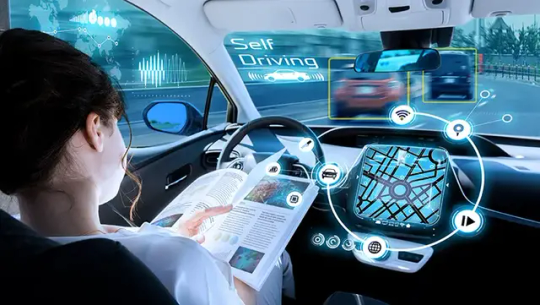
Have you ever caught yourself dreaming of driving around town in a self-driving car?Get ready, because this future is right around the corner, and you don't even know it, because the race to build cars is at its peak, and artificial intelligence is the central pillar.But before we dive headlong into this field, I'd like to stop for a moment and think about why anyone would want a self-driving car. Try to imagine this scenario: you're driving along the freeway and suddenly you see a chicken and a sloth playing pickleball on the side of the road (sorry, that's the best I could come up with). In a normal car, you'd probably be concentrating on the road and miss this strange sight (which, let's face it, sucks). But what if you were in a self-driving car? You'd be able to enjoy the show as you please, without fear of finding yourself in oncoming traffic.
The need for autonomous cars
Let's face it, the previous example was the lamest of them all, and it's certainly not the most appropriate. But I'd like you to keep this in mind: around 90% of car accidents in the United States are due to human error, according to the National Highway Traffic Safety Administration. Let's face it, we humans are broken drivers. We're (always) distracted, we're tired, we make bad decisions. Why do we behave as if we had 16 at the wheel?It's because of this kind of attitude that AI steps in, and promises to be wise and responsible adults in the car.the AI doesn't get distracted by an incredible song on the radio, or by a discussion about whether that's Ryan Reynolds we've just passed on the street - just the opposite of us. It keeps its eyes (that's a metaphor okay!) on the road at all times.
How does AI power autonomous vehicles?
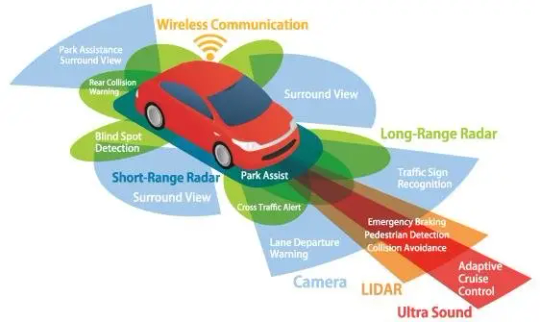
The question on everyone's mind is how can AI enable a car to drive itself? Well, it's not magic (even if it looks a little like magic, that is). Rather, it's about giving the car a 2.0 version of the five senses, and a brain to make sense of the hubbub.
Key AI Technologies Enabling Self-Driving Cars
The Car's Eyes and Ears
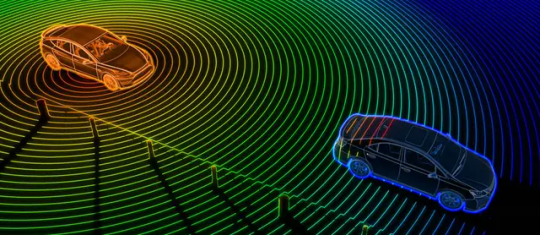
Lidar in Autonomous Driving: Pros, Cons & More dubizzle First of all, we have the car's eyes. They come in the form of cameras, radars and a device called LIDAR (which looks like a radar, but with lasers - in case you didn't know, this technology was used in Avengers Infinity War, the scene where we see Thanos' ship land on a city - it wasn't a photo, a video or even a 3D city). These sensors scan the environment all the time, looking for absolutely everything, whether it's other cars, pedestrians or even the chicken and sloth we mentioned earlier ( Good! I promise this is the last time we'll talk about this stuff)
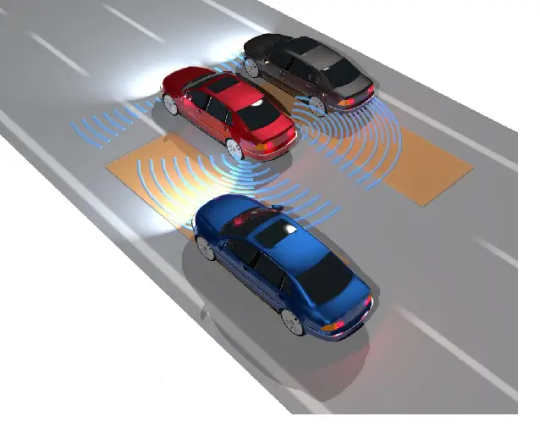
Vehicle tracking using ultrasonic sensors & joined particle weighting Semantic Scholar Next, we have the ears. These are ultrasonic sensors that work like bat sonar, bouncing sound waves off nearby targets to estimate their distance. And it's very useful for parking, because, let's be honest, not even the AI wants to parallel park if it can avoid it.then there's the sense of touch, which in this case consists of feeling the car's movements. Accelerometers and gyroscopes track the car's speed and position, a bit like the inner ear does for humans (but without the risk of discomfort in the car, otherwise it would have been weird).The Brains of the Operation
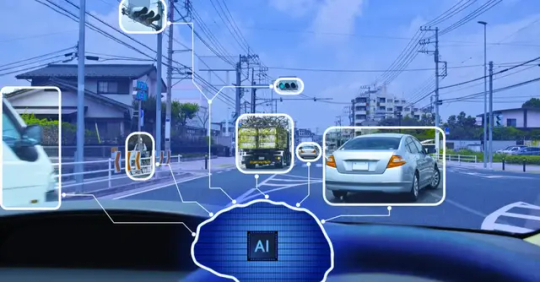
active learning and autonomous-vehicles-cloudfactory.com All this sensory information is fed to the car's brain, a sort of hyper-powerful on-board computer running artificial intelligence algorithms. And this is where the magic happens. The AI will use all this data to build a real-time 3D model of the world around the car. It's a bit like The Matrix, but instead of dodging bullets, it dodges potholes and pedestrians.Machine Learning: Practice Makes Perfect But it's not enough for AI to see the world, it has to understand it. For this, we need machine learning. When it analyzes millions of hours of driving data, AI will learn to recognize what I'll call patterns and make anticipations, or in more appropriate terms, predictions.If a car overtakes, is it likely to change lanes? That pedestrian, is he about to step off the sidewalk? AI simply asks itself these kinds of questions all the time, answering them on a regular basis and far more quickly than a human ever could.Path Planning and Navigation
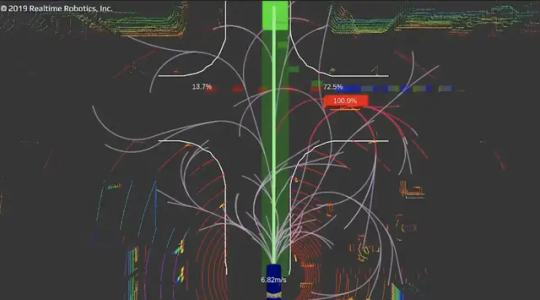
Autonomous Driving and the Need For Motion Planning- Realtime Robotics Once the AI has understood what's going on around it, it needs to decide what to do. This is where it really starts to get exciting (and a little philosophical, I'd say). The AI has to be programmed with a set of rules and priorities. Should it prefer the safety of its passengers to that of pedestrians? How should it handle moral situations like the famous cart problem?These are difficult questions, and it's because of situations like these that we're all driving around in self-driving cars.But progress is being made. Companies like Tesla, Waymo and Uber are traveling millions of kilometers in autonomous cars, and they're teaching their AIs how to handle all kinds of situations, from rush-hour traffic to unexpected weather conditions.
Levels of Vehicle Automation
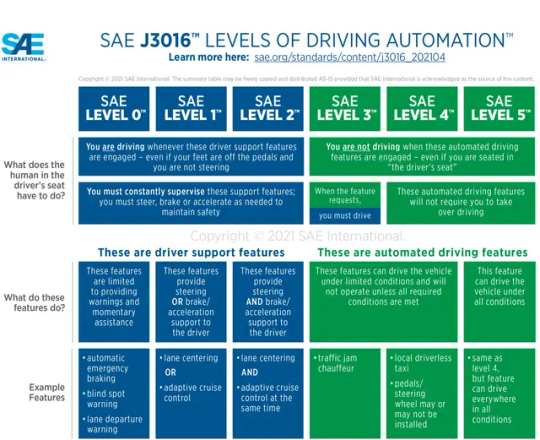
SAE Levels of Driving Automation™ Refined for Clarity and- SAE international Speaking of progress, let's talk about autonomous driving levels, because if you didn't already know, the Society of Automotive Engineers (SAE) has kindly and carefully only determined six levels for us, from 0 to 5Autonomy levels- Level 0 corresponds to grandfather's old pickup truck, with no automation whatsoever. No automation whatsoever. - Level 1 can, and I mean can, have cruise control or lane-keeping assistance. Other than that, zilch. - We're currently seeing a lot of Level 2 cars on the road, which can handle certain driving roles and nothing more, but still need a human to take over at any given moment. - It's at level 3 that we get to caress autonomous driving a little. These cars can handle the majority of driving tasks, and still need WE, the human saviors, to take over. - Level 4 cars can drive themselves in most conditions, but when the going gets tough and the going gets a bit red, like the weather, they gently give way to humans. - And level 5? This is the Holy Grail, the pearl of pearls, a car capable of driving itself, in all conditions, in all situations, without the need for human intervention.Now, I've had some personal experiences with this technology that I'd like to share. I recently test-drove a car with Level 2 autonomy, and let me tell you, it was both exhilarating and terrifying. Watching the steering wheel move on its own as the car navigated a curve was like witnessing magic. But I also found myself constantly hovering my hands over the wheel, ready to take control at a moment's notice. It's a stark reminder that we're still in a transitional phase, where AI driving automation in the automotive industry is impressive but not yet perfect.Technical ChallengesYou may be thinking: all this sounds cool, but when am I going to buy this thing? That's the million-dollar (or multi-billion-dollar) question.The truth is, we're not there yet. While companies like Tesla are still inventing advanced driving assistance systems, truly autonomous vehicles are still a long, long way off - in fact, they're still in the testing phase. Personally, I couldn't care less about autonomous cars, it's not something I'm looking forward to, but if autonomous cars tempt you, some analysts think that by 2030, up to 15% of cars sold could be fully autonomous. It may not sound like much, but in 2010 electric cars accounted for less than 1% of new car sales. Today, they account for almost 10% in many countries. Technology has a way of surprising us.The catch (there is always a catch)As always, and this is starting to get on my nerves, there are challenges to be met. One of the most important is ensuring that these AI drivers are capable of handling unpredictable real-world events. It's one thing to navigate a well-mapped city street, but not the same for a country road that's not on any map, or a construction zone that appears overnight. These are the kinds of scenarios that keep AI engineers up at night.There's also the question of public confidence. There are many who disagree or are afraid of entrusting absolute control to a computer. It's going to take time, time and more time (I don't think the 2030s are still relevant.) and proof of safety, so there's a lot of proof of safety before most of us feel comfortable taking a little nap while our car takes us to work. In any case, if we can be persuaded to implant a neuralinks chip in our brains, this trick will be a piece of cake.And yes! We're already entrusting our lives to artificial intelligence. Every time you board a commercial aircraft, you're trusting the artificial intelligence systems that manage much of the flight. And without lying to us, most of us trust Google Maps more than our own sense of direction.Is it worth fighting for?By the time we get to fully autonomous cars, we'll have traveled a whole long and boring, with plenty of potholes along the way. But if we consider the benefits it could bring, it might just be worth it. Isn't a world where road accidents are drastically reduced, where the elderly and disabled can move around freely, where traffic flows like water because every car communicates with every other car, worth it?Yes! it's worth working for, even if we have to deal with a few bugs along the way. After all, as any programmer will tell you, the first step in fixing a bug is to find it. Not to mention that test vehicles cover millions of miles every year, which could eliminate these bugs at a hell of a rate.So if you happen to be stuck in those pesky traffic jams and think about this article and the day when you'll be able to sit back and let your car do the driving, remember our little secret: that day will come. Maybe not tomorrow, maybe not next year, maybe not even in the next 10 years. But it's coming. And when it does, it will change the way we travel forever.
Conclusion
In the meantime, keep your eyes on the road. And if you happen to see a chicken and a sloth playing pickleball, well ( damn! I promised I wouldn't talk about that thing anymore)... maybe it's time to stop and check if you're dreaming. Or if you've stumbled across a Pixar movie. Either way, it might be best to let a human take the wheel on this particular journey. Read the full article
#AIadvancementsinautonomousvehiclenavigation#AIalgorithmsforself-drivingcars#AIdrivingautomationintheautomotiveindustry#AIinautonomousvehicles#AIinself-drivingcars#AI-basedautonomousvehiclesystems#AI-poweredself-drivingcarsoftware#AI'simpactonautonomousvehicletechnology#autonomousvehicles#benefitsofAIinautonomousdriving#futureofAIinself-drivingcars#self-drivingcarsafetywithAI#self-drivingcars#self-drivingtechnology#theroleofAIindevelopingself-drivingtechnology
0 notes